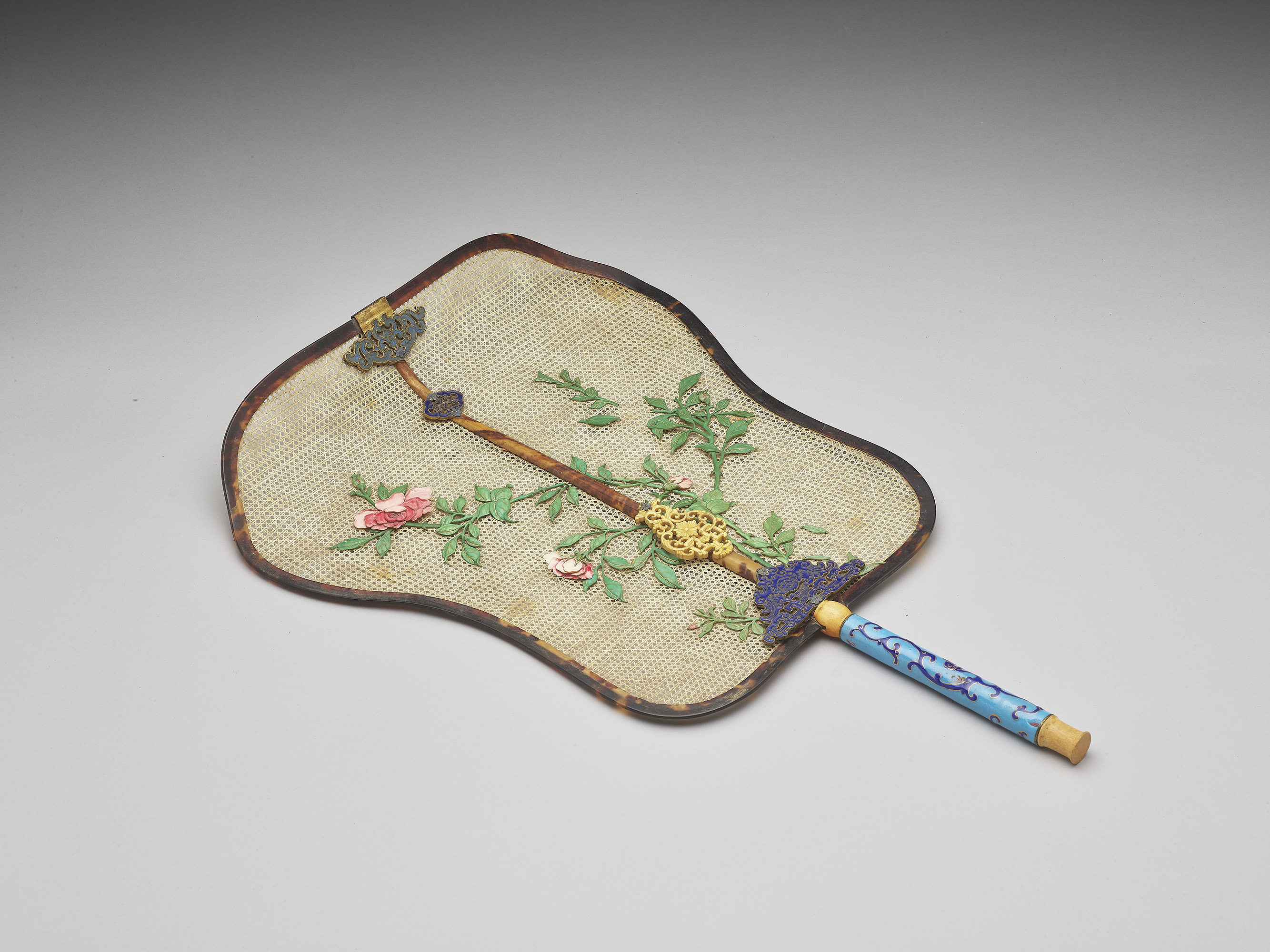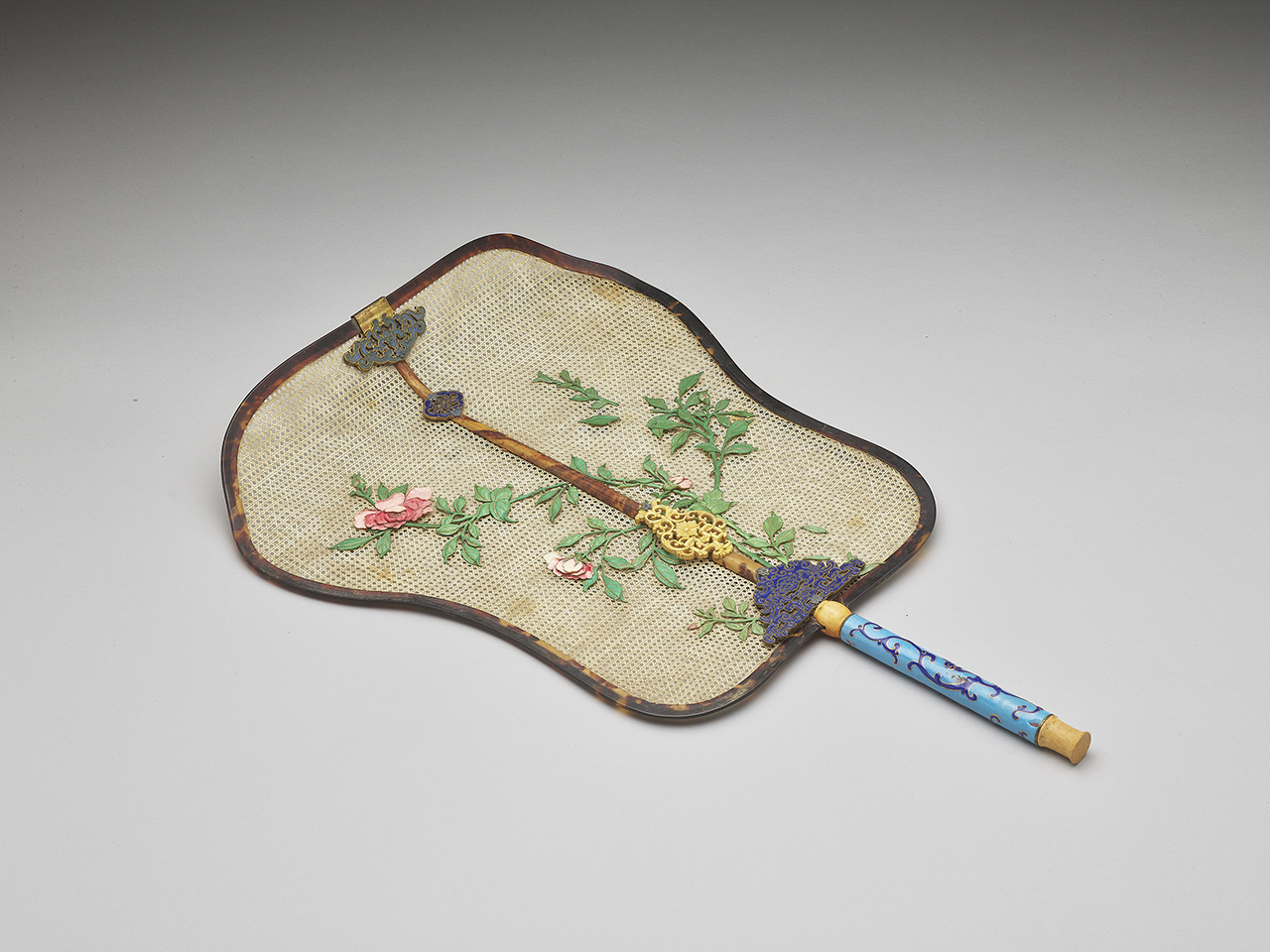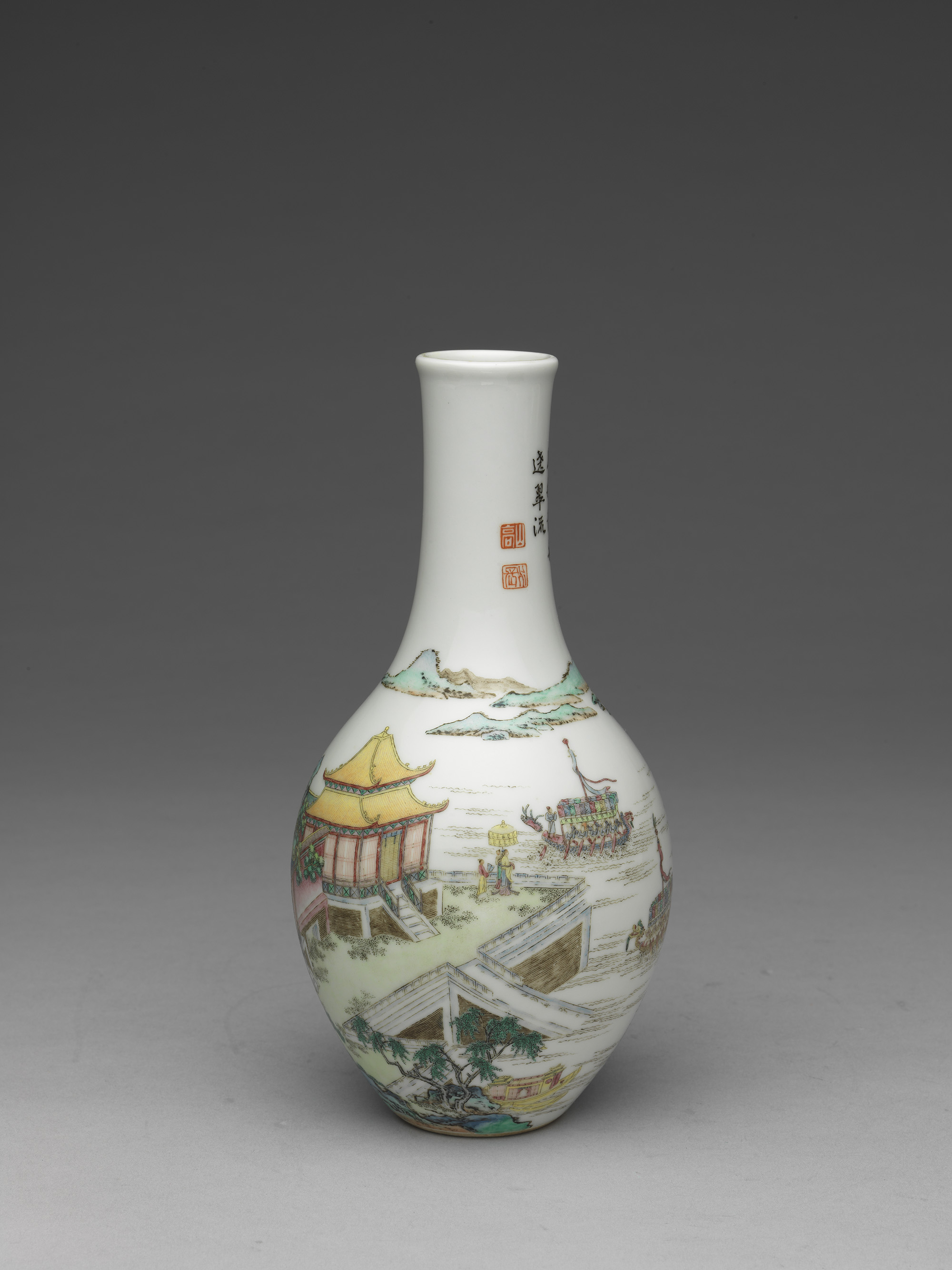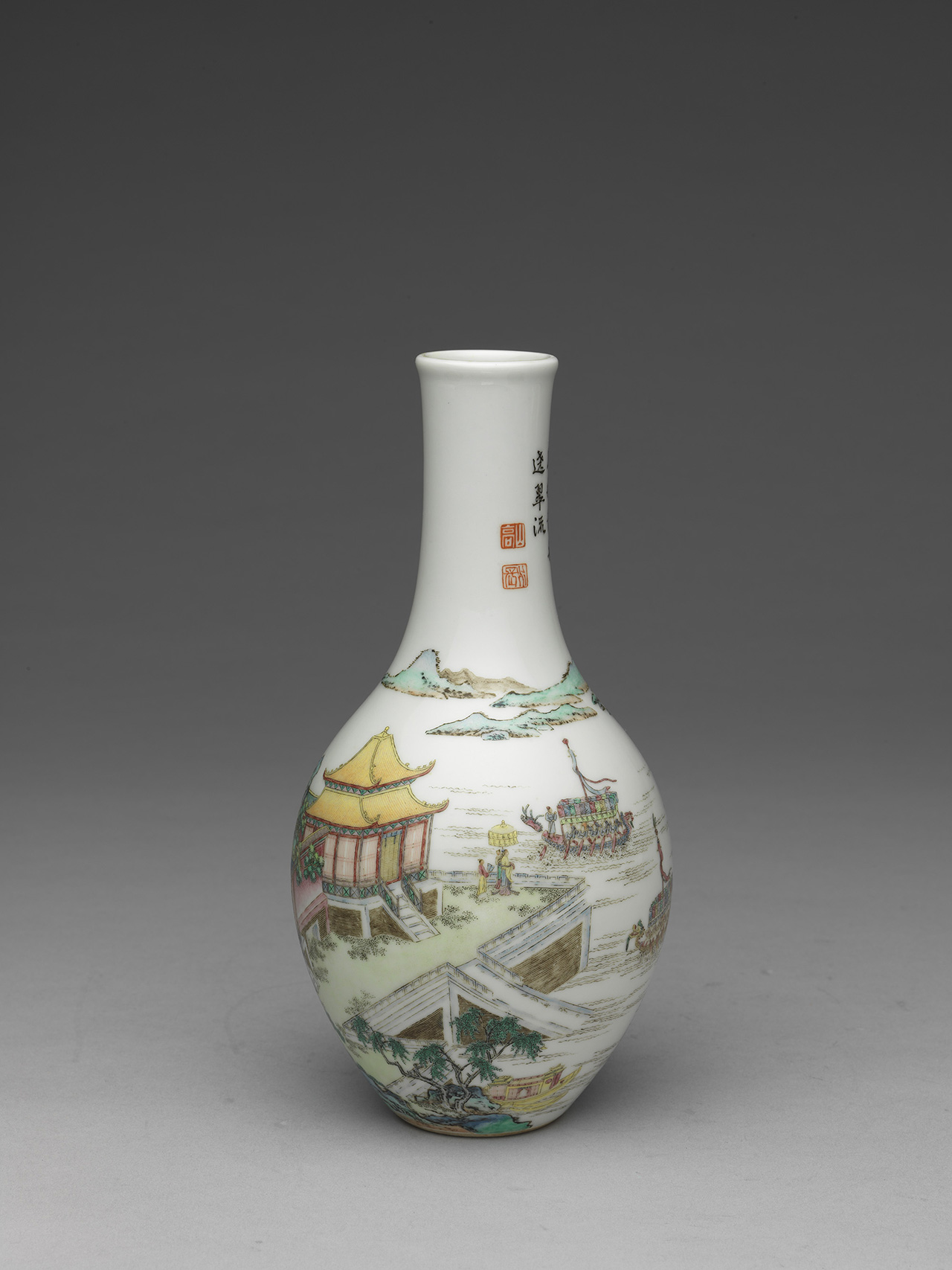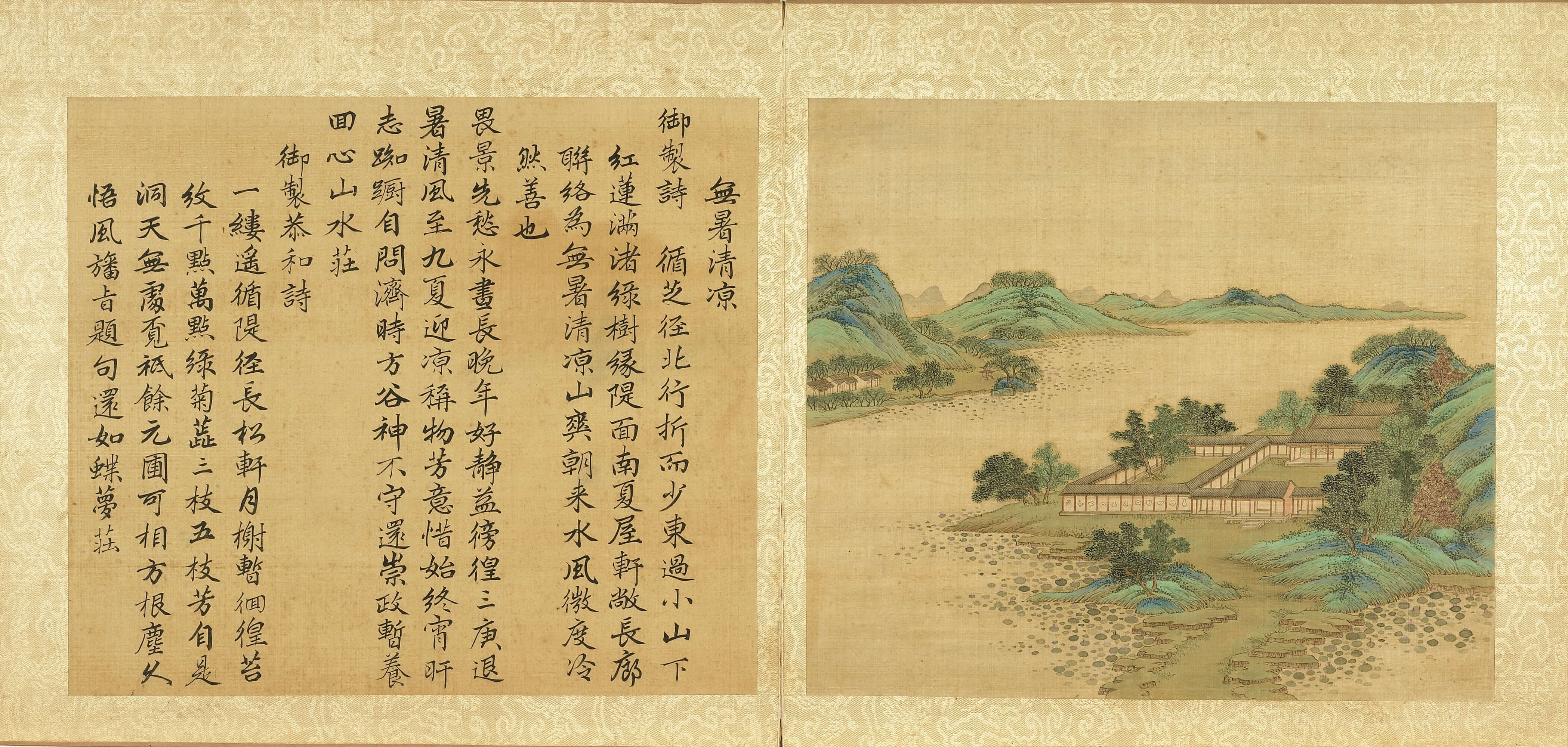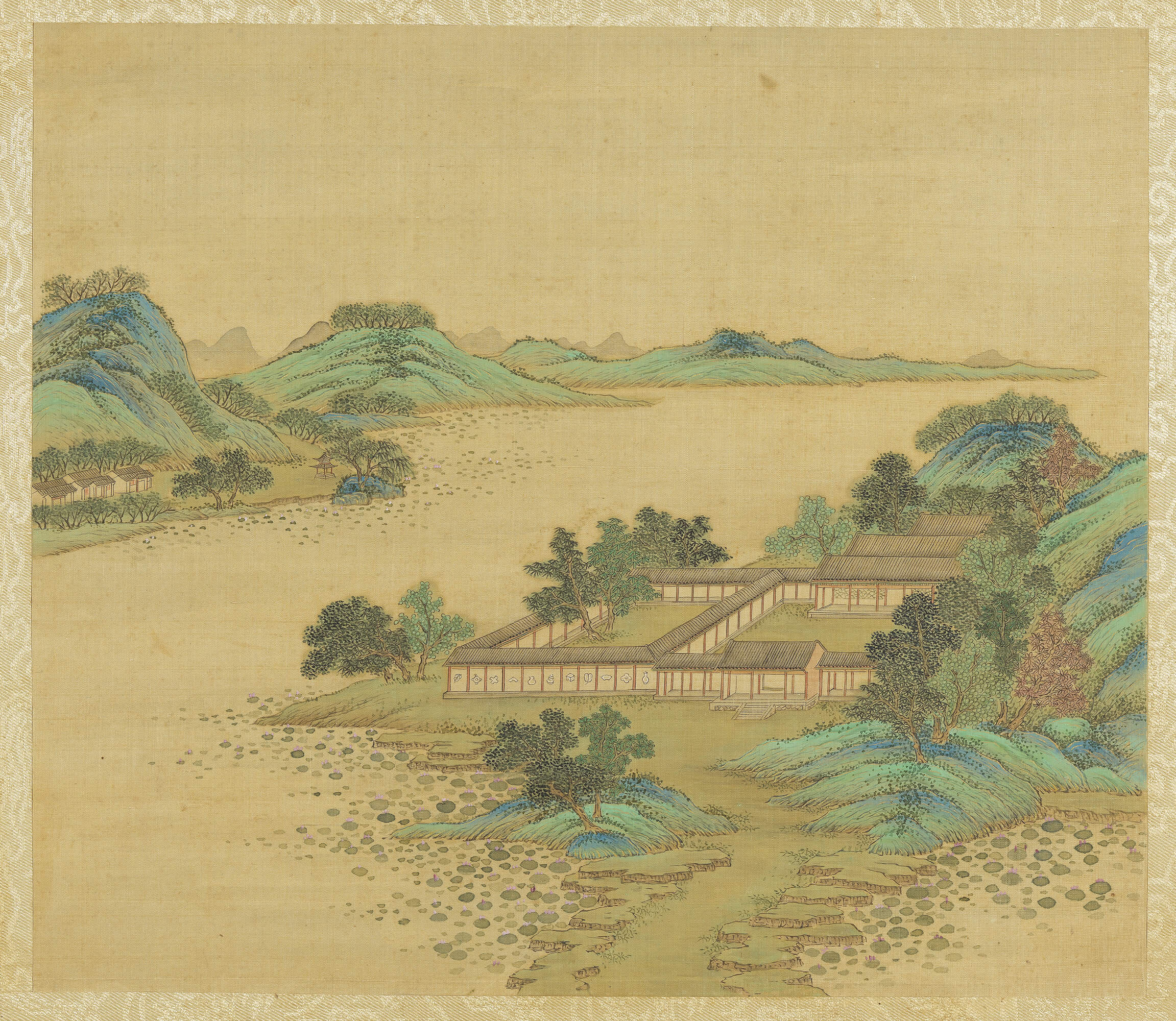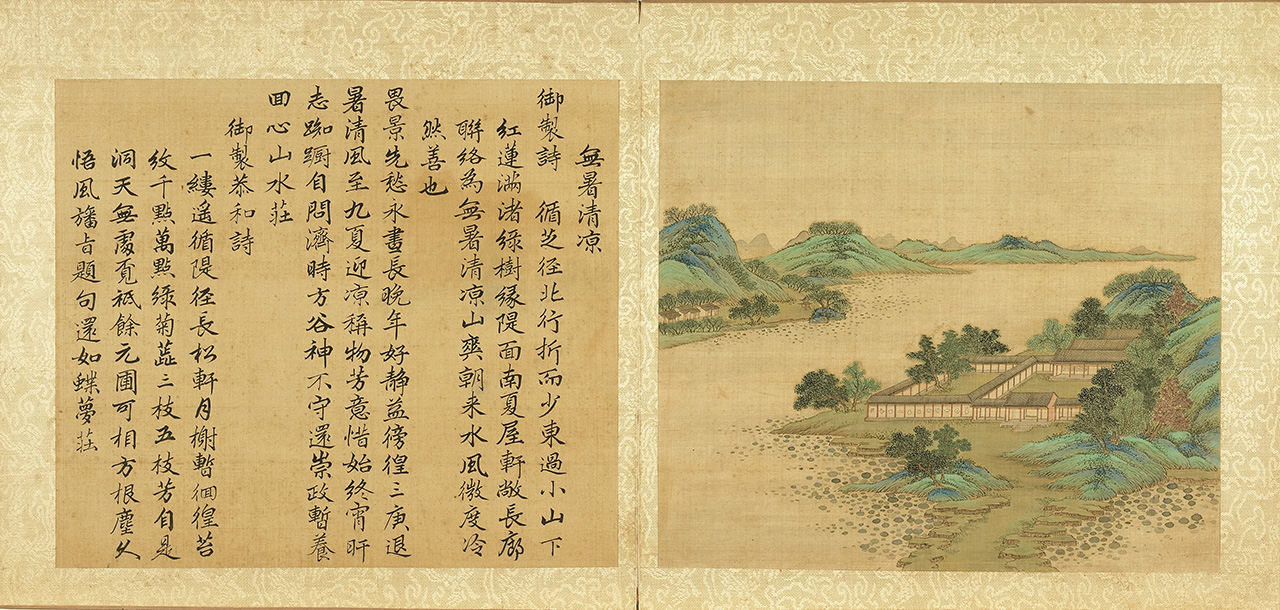Seasonal Rhythms
Traditional time was structured by celestial movements, ritual ceremonies, and the agricultural calendar. The Qing dynasty's sense of time merged Han Chinese customs with Manchu-Mongolian tradition, evolving into diverse forms that followed seasonal and natural changes. Through spring awakening, summer growth, autumnal harvest, and winter retreat, this cycle reveals the story of a year in the Qing dynasty.
Summer Growth
- Ivory fan with bone inlay and floral design
- Qing dynasty (1644–1911)
This fan is a fine example of Guangdong's distinctive tradition of split ivory-thread weaving. Imperial archives record that Guangdong's highest officials presented such "ivory-thread palace fans" as Dragon Boat Festival tributes in the mid-to-late Qianlong era.
The banana leaf–shaped fan showcases refined artistry: its surface features woven ivory threads with dyed-bone rose motifs, s tortoiseshell-inlaid frame encompasses a handle and ribs combining cloisonné enamel and bamboo, and it is finished with cloud and fortune motif terminals.
- Vase with dragon boat in painted enamels
- Qianlong period (1736–1795), Qing dynasty
These companion vases feature architectural landscapes with dragon-boat racing scenes. The polychrome decoration shows pavilions and towers above the racing waters, complemented by a calligraphic inscription celebrating the festive scene. The decoration matches historical accounts describing ornate racing vessels.
- Cool in the Summer
- From Bishu Shanzhuang Tu Bing Qianlong Tishi Ce (Summer Mountain Resort with Imperial Poem by Qianlong)
- Zhang Ruai (1713–1746)
- Qing dynasty (1644–1911)
The Chengde Summer Mountain Resort (originally known as the Jehol Imperial Villa) lay beyond the Great Wall. Here, the Kangxi Emperor (1654–1722) and Qianlong Emperor (1711–1799) would spend their summers and conduct autumn hunts in the frontier. Zhang Ruai (1713–1746) captured these scenes in four albums, each paired with celebratory poems composed by the two emperors.
